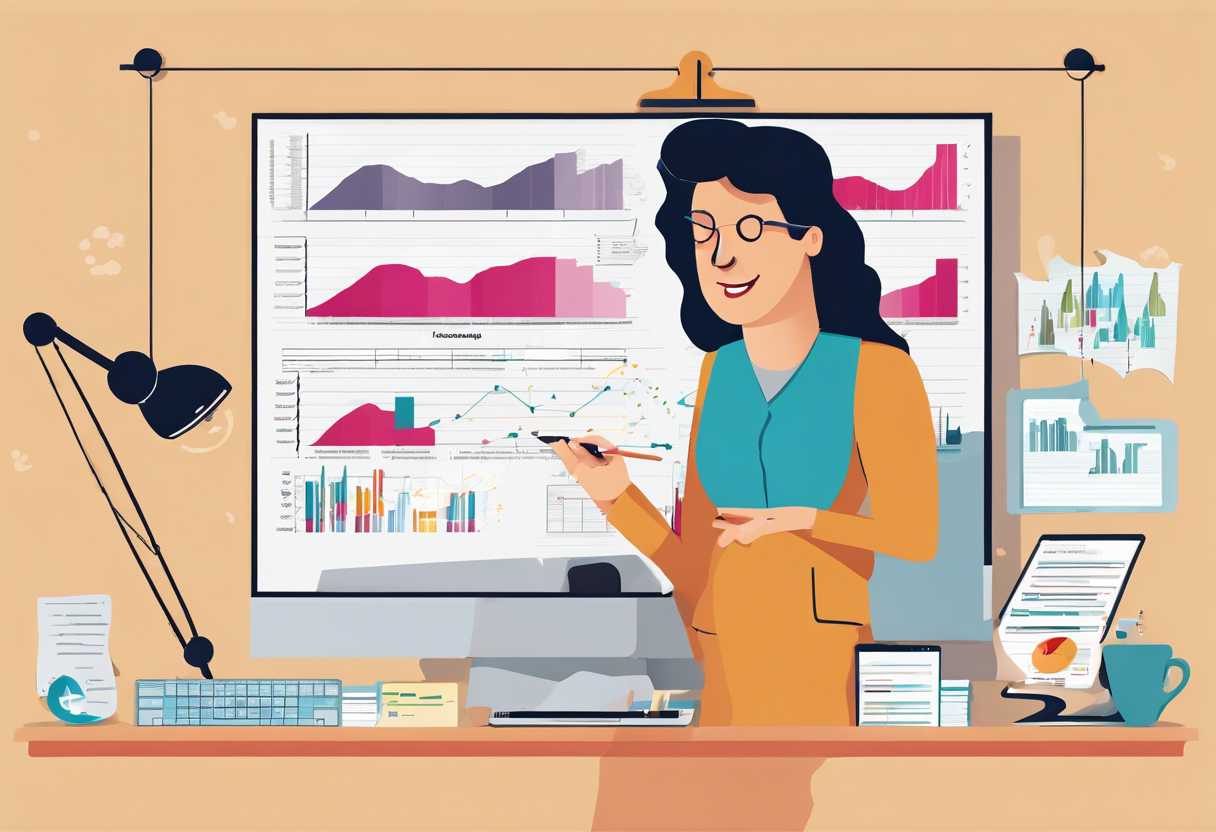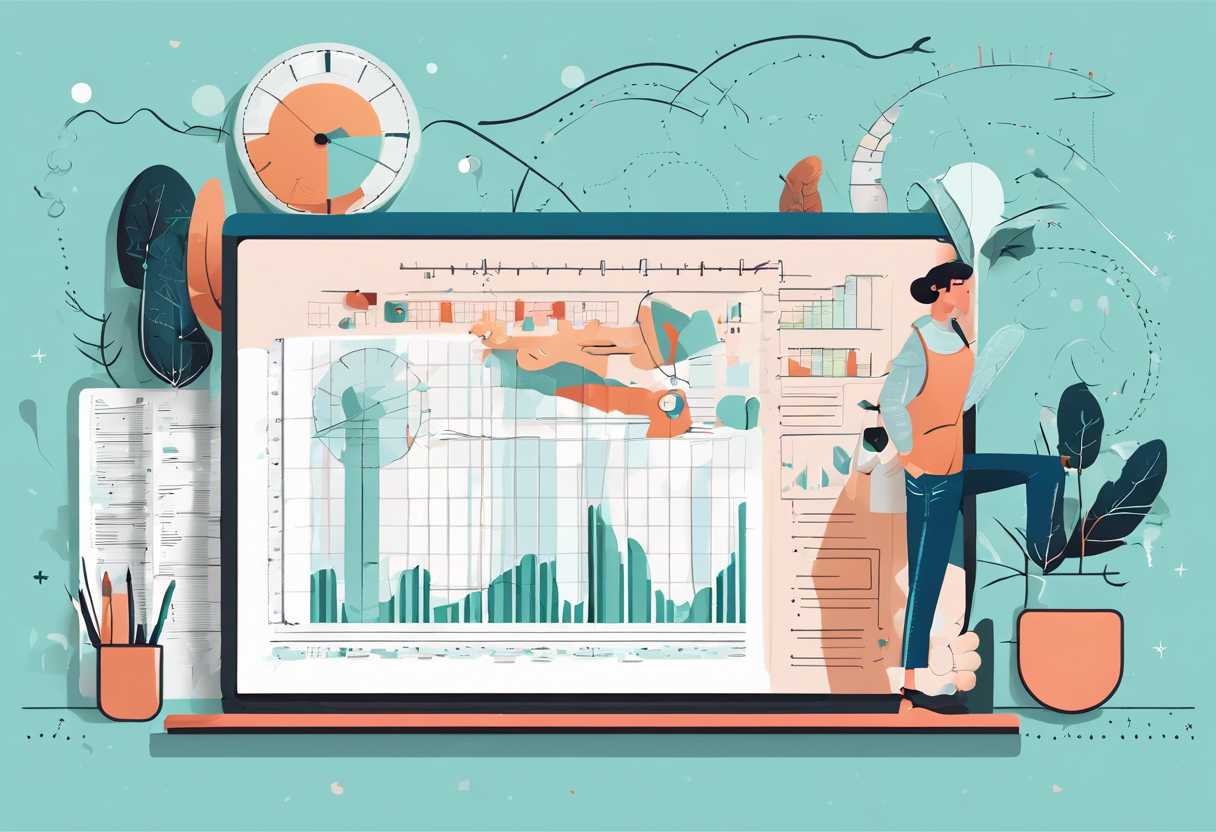Are you looking to gain a better understanding of Gantt charts and how they can benefit your project management workflow? In this blog post, we will delve into the basics of Gantt charts, explore their advantages in project management, and provide tips for creating and customizing Gantt charts for your specific projects. We will also discuss effective ways to use Gantt charts to track progress and integrate them seamlessly into your project management workflow. Whether you are new to Gantt charts or looking to enhance your existing knowledge, this post will provide you with valuable insights and practical tips to optimize your project management processes. So, let’s dive into the world of Gantt charts and unlock their potential for your projects.
Understanding the Basics of Gantt Charts Explained
What is a Gantt Chart?
A Gantt chart is a visual representation of a project schedule that shows the start and finish dates of the various elements of a project. It is a powerful tool for project management as it allows for easy visualization of the project timeline, dependencies, and progress.
Key Components of a Gantt Chart
One of the key components of a Gantt chart is the task list, which outlines all the activities that need to be completed for the project. Each task is represented by a bar on the chart, with the length of the bar indicating the duration of the task. Additionally, the chart includes milestones, which are significant points in the project timeline, and dependencies, which show the relationships between different tasks.
Another important aspect of a Gantt chart is the timeline, which is typically displayed horizontally across the top of the chart. This timeline shows the duration of the project and allows for easy tracking of progress.
Benefits of Using Gantt Charts
Using Gantt charts offers several benefits for project management. Firstly, they provide a clear and visual representation of the project timeline, making it easy to understand and communicate the schedule to stakeholders. Additionally, Gantt charts help in identifying potential bottlenecks and overlapping tasks, allowing for better resource allocation and scheduling. Moreover, they enable project managers to track progress and make adjustments to the schedule as needed, ensuring that the project stays on track.

The Benefits of Using Gantt Charts in Project Management
Improved Planning and Scheduling
Gantt charts provide a visual representation of a project’s timeline, allowing project managers to easily see the sequence of tasks and their dependencies. This helps in creating a more accurate and realistic project schedule, leading to improved planning and scheduling. With a clear overview of the project timeline, project managers can allocate resources more effectively and identify potential bottlenecks before they occur.
Enhanced Communication and Collaboration
By using Gantt charts, project managers can effectively communicate the project timeline and progress to team members, stakeholders, and clients. This visual representation helps in aligning everyone’s expectations and understanding of the project’s timeline and milestones. Additionally, Gantt charts facilitate collaboration by allowing team members to see how their tasks fit into the overall project timeline, fostering a sense of ownership and accountability.
Increased Productivity and Efficiency
With the ability to clearly see the project timeline and task dependencies, team members are better equipped to prioritize their work and focus on critical tasks. This leads to increased productivity and efficiency as team members can avoid wasting time on non-essential tasks and stay on track with the project schedule. Gantt charts also help in identifying potential resource conflicts and overallocation, allowing for adjustments to be made to optimize resource utilization.

How to Create and Customize Gantt Charts for Your Projects
Understanding Gantt Charts
Gantt charts are a popular project management tool that provides a visual representation of a project’s schedule. They are used to track tasks, deadlines, and dependencies, making it easier to manage and monitor the progress of a project.
When creating a Gantt chart, it’s important to understand the basic elements, such as tasks, start and end dates, and milestones. This will help you effectively customize and utilize the chart for your specific project needs.
Customizing Gantt Charts
Customizing a Gantt chart allows you to tailor it to your project’s unique requirements. This can include adding or removing tasks, adjusting timelines, and highlighting important milestones. By customizing the chart, you can ensure that it accurately reflects the scope and timeline of your project.
One way to customize a Gantt chart is by using specialized project management software that offers a range of customization options. These tools often allow you to color-code tasks, add dependencies, and adjust the layout to best suit your project’s needs.
Best Practices for Gantt Charts
When creating and customizing Gantt charts, it’s important to follow best practices to ensure their effectiveness. This includes regularly updating the chart to reflect any changes in the project timeline, communicating the chart to all stakeholders, and using it as a tool for ongoing project management.
Additionally, it’s important to consider the level of detail needed in the Gantt chart. While some projects may require a high level of granularity, others may benefit from a more simplified view. Understanding the needs of your project will help you create a Gantt chart that is both informative and easy to use.
Tips for Effectively Using Gantt Charts to Track Progress
Understanding the Basics of Gantt Charts
Gantt charts are a popular project management tool that visually represents the schedule of tasks and their dependencies. They provide a clear overview of the project timeline, helping teams to stay on track and meet deadlines. To effectively use Gantt charts, it’s essential to understand the basics of how they work and how to interpret them.
Utilizing Gantt Charts for Resource Allocation
One of the key benefits of Gantt charts is their ability to help with resource allocation. By clearly outlining the tasks and their timelines, project managers can easily see where resources are needed and when. This allows for better planning and allocation of resources, ultimately leading to more efficient project management.
Regularly Updating and Monitoring Gantt Charts
It’s important to regularly update and monitor Gantt charts to ensure their effectiveness in tracking progress. As the project progresses, tasks may be completed ahead of schedule, delayed, or added. By keeping the Gantt chart up to date, teams can accurately track progress and make necessary adjustments to the project timeline.
Integrating Gantt Charts into Your Project Management Workflow
The Benefits of Using Gantt Charts
Integrating Gantt charts into your project management workflow can bring numerous benefits to your team. Gantt charts provide a visual representation of project timelines, allowing for better planning and scheduling. They also help in identifying dependencies between tasks and tracking progress, which can lead to improved project efficiency and timely delivery. Additionally, Gantt charts facilitate effective communication among team members and stakeholders, as they provide a clear overview of the project’s status and upcoming milestones.
How to Effectively Use Gantt Charts
When integrating Gantt charts into your project management workflow, it’s essential to ensure that they are used effectively. This involves breaking down the project into smaller tasks and assigning them to team members with clear deadlines. It’s also important to regularly update the Gantt chart to reflect any changes in the project timeline or task dependencies. Furthermore, utilizing Gantt chart software that allows for collaboration and real-time updates can enhance the effectiveness of Gantt charts in project management.
Choosing the Right Gantt Chart Software
When integrating Gantt charts into your project management workflow, selecting the right Gantt chart software is crucial. Look for software that offers features such as drag-and-drop functionality, task dependencies, resource management, and customizable views. Additionally, consider the software’s compatibility with other project management tools and its ability to generate reports and analytics. By choosing the right Gantt chart software, you can ensure seamless integration into your project management workflow and maximize the benefits of using Gantt charts.
Conclusion
As we conclude our exploration of Gantt charts, it’s clear that these visual tools are indispensable for effective project management. By understanding the basics of Gantt charts and the benefits they offer, you can streamline your project planning and tracking processes.
Learning how to create and customize Gantt charts for your specific projects allows for greater flexibility and adaptability, while our tips for effectively using Gantt charts to track progress ensure that you can stay on top of your project timelines and milestones.
Integrating Gantt charts into your project management workflow can revolutionize the way you approach and execute projects, leading to improved efficiency and productivity.
Whether you’re a seasoned project manager or just starting out, incorporating Gantt charts into your toolkit can make a significant difference in your project outcomes. So, why not give them a try and experience the benefits firsthand?
Thank you for joining us on this journey to understand Gantt charts. We hope you found this guide helpful and that you’re now equipped to leverage Gantt charts for your project management needs.
Happy charting!

